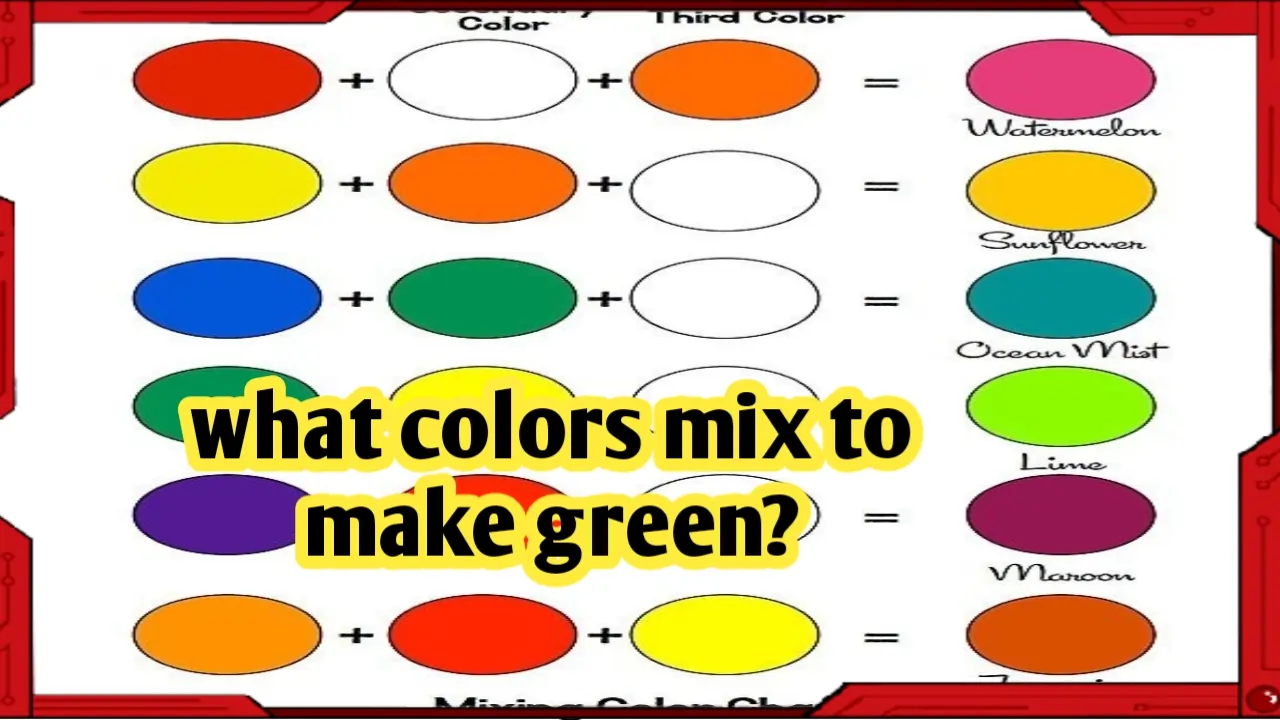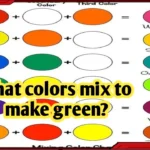Introduction
Welcome to the world of color alchemy, where the question “what colors mix to make green?” sparks curiosity and creativity. In this article, we’ll embark on a journey through the color spectrum, exploring the magic of blending hues to achieve the mesmerizing shade of green. Get ready to unravel the secrets behind this captivating process.
The Basics of Color Mixing
Primary Colors: The Foundation of Green
Delving into the fundamentals, understanding primary colors is crucial. Blue and yellow take the spotlight as the primary contributors to the creation of green. These colors, when skillfully mixed, give birth to the lush tones that characterize nature.
Secondary Colors: Green’s Playmates
Secondary colors play a pivotal role in the palette. Mixing blue and yellow, the secondary color green emerges. Explore the nuances of this blending process, where the dance of colors results in the vibrant green we often associate with grass and leaves.
Tertiary Colors: Refining the Palette
Go beyond the basics and discover the world of tertiary colors. Blending blue-green and yellow-green refines the palette, offering a spectrum of greens that mimic the diversity found in the natural world. Explore the subtle variations that arise from these nuanced combinations.
Exploring Shades and Tints
Adding White: Lightening the Palette
To create lighter shades of green, introduce white into the mix. Blending green with varying amounts of white allows for the creation of pastel greens and minty hues, providing a refreshing twist to the color spectrum.
Introducing Black: Deepening the Green
For those desiring deeper, more intense greens, the addition of black is the key. Mixing green with black creates forest greens and emerald tones, adding a touch of mystery and richness to your color palette.
What Colors Mix to Make Green? A Practical Demonstration
In the Artist’s Studio: Step-by-Step Guide
Step into the artist’s studio as we demonstrate the process of color mixing to achieve green. Watch as blue and yellow pigments blend seamlessly on the canvas, resulting in the vibrant green that captivates the eye. Gain insights into the artist’s technique and learn how to replicate it in your own creative endeavors.
FAQs about Mixing Colors to Make Green
Certainly! While blue and yellow are primary contributors, experimenting with other combinations like cyan and magenta can yield unique shades of green. The key lies in exploring and embracing your creativity.
Mixing red and yellow produces orange, not green. Understanding the principles of color theory is essential. Stick to the primary color combination of blue and yellow for achieving the perfect green.
Absolutely. The proportion of blue to yellow determines the shade of green. Adjusting the ratio allows for the creation of light or dark greens, providing flexibility in expressing your artistic vision.
Yes, you can! Complementary colors, such as mixing red and cyan, can result in shades of green. Explore the fascinating interplay of colors and push the boundaries of traditional color mixing.
Indeed, nature has its own palette. Explore plants like spinach and kale, showcasing vibrant greens without the need for human intervention. Nature’s greens offer inspiration for artists and color enthusiasts alike.
Absolutely! Embrace the diversity of greens by mixing various shades together. This creates depth and complexity in your palette, allowing you to express a wide range of emotions through the language of color.
Conclusion
In the world of color, the question of “what colors mix to make green?” opens doors to endless possibilities. From the classic blend of blue and yellow to the exploration of tertiary colors and beyond, the art of color mixing is a journey of creativity and expression. Unleash your inner artist, experiment with hues, and watch as the enchanting world of green unfolds on your canvas.










